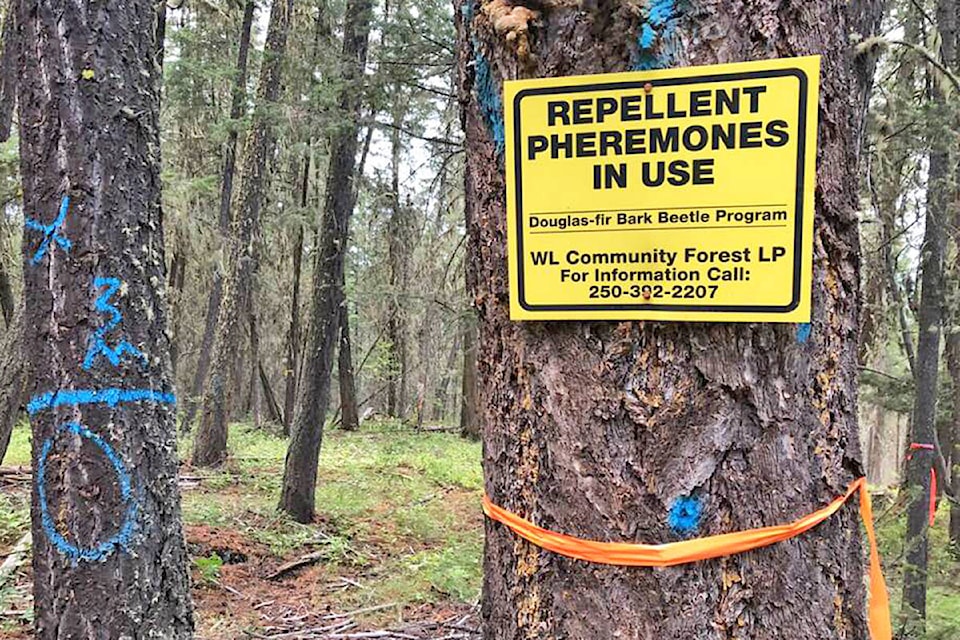Mark Runge
Special to the Tribune
Industrial Update 2019
Although the salvage harvest of burned timber from the 2017 and 2018 wildfires has captured the headlines in recent years, the Douglas-fir bark beetle has silently been attacking our Douglas-fir forests. Often the trees that aren’t completely killed by wildfire are stressed and attract the beetle and help the populations build up to the point that they can successfully move off to attack and kill healthy Douglas-fir trees.
Under the Beetle Management Unit System of the Ministry of Forests, Lands, Natural Resource Operations and Rural Development; West Fraser is responsible for the management of beetles in its operating areas. Some of the most significant infestations have been in the Skelton, Buxton and Gavin Lake areas where West Fraser has been intensely carrying out beetle probes with ground crews walking the areas identified in the ministry’s annual aerial survey.
The beetle probers look for patches of sawdust called frass on the outside of the bark that indicate the beetles have bored into the tree and confirmed by chopping into the bark with an axe to reveal beetle galleries created by the larvae. They then mark the tree with paint and enter the GPS location for mapping. The infested trees along with skid trails are then mapped to allow logging equipment to get to the infested trees to fall, skid, process and deliver them to our mills while the beetles are still under the bark. By doing this all in the first season of the attack we successfully dispose of the beetles and utilize the tree while it still has high value.
Read More: Ministry to target Douglas-fir beetle infestation with heli-logging again
This process is very labour intensive: West Fraser hires contractors employing thirty beetle probers starting in August each year and finishing in December to probe and map the infestations in time to carry out logging operations before breakup.
We also hire six logging contractors that start the harvesting of the infested trees in December through to break up in March. In 2018 we harvested over 100,000 m3 of fir beetle infested timber all individually marked trees and look to do the same amount in 2019.
When the infested logs are delivered to our mills they have the highest priority for being milled quickly. However, not all of them can be milled right away, so we manage a system of funnel traps combined with an attractant that draw and trap the emerging beetles in the spring to ensure they don’t leave the sawmill and plywood plant log yards. We also use reloads closer to the beetle sites to ensure we get the infested trees out of the bush before road restrictions go on.
One is near Big Lake, the other is closer to Likely. Although we will deliver these logs to our mills before the beetles emerge in the spring, we use the funnel traps at these reloads as an added precaution to trap any emerging beetles.
Trap trees are another tool used to attract and trap fir beetles where harvesting is not operationally feasible.
A Douglas-fir tree that is felled prior to the emergence of the beetles in the spring attracts the beetles and allows us to fall the trees before in the winter, then process and deliver the tree to the mills in the fall after the beetle flights have ended.
Mark Runge is the woods manager for West Fraser in Williams Lake.
